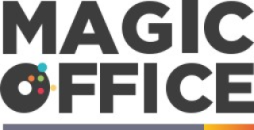
Navigating the Digital Landscape: Vital Tools for Today's Office Managers
Steering Through the Technological Terrain
In today's hyper-connected world, the role of an Office Manager is evolving rapidly as digital technologies shape the workplace environment. To stay ahead of the curve, it's essential to harness tools that boost efficiency and productivity. With 58% of businesses engaging in digital transformation, it’s crucial for Office Managers to lead this digital adoption. A Comprehensive Document Management System (DMS) is one such tool that transforms the way information is stored, retrieved, and shared.
The Dawn of Digital Documentation
Replacing traditional filing cabinets with a DMS not only saves physical space but also ensures data security and seamless access. It's reported that an astounding 82% of businesses have transitioned to digital documents to reduce paper waste. As Office Managers, adopting a DMS allows for quick search and retrieval of documents, leading to a reported 35% increase in operational efficiency.
Empowering Teams with Cloud-Based Solutions
Cloud computing is no longer a futuristic concept but a fundamental aspect of modern business operations. It allows for real-time collaboration irrespective of geographical constraints, with 67% of enterprises using cloud-based applications to streamline their processes. Office Managers can leverage cloud solutions to ensure teams work on the most updated documents and contribute simultaneously, improving project turnaround times significantly.
Embracing the Automation Advantage
The power of automation lies in its ability to take over repetitive and time-consuming tasks. Tools like CRM software and automated scheduling enhance office management by freeing up valuable time, allowing managers to focus on strategic initiatives. For example, businesses employing automation have observed a reduction in processing costs by up to 90%. Automating mundane tasks not only increases accuracy but also empowers employees to engage in more creative and analytical work.
- Digital Dexterity: Implement user-friendly tools to enhance digital navigation.
- Secure Storage: Utilize DMS for better security and compliance.
- Collaboration Empowerment: Choose cloud solutions that fit your team design.
- Smart Automation: Identify processes that can benefit from automation.
From Paper to Pixels: Embracing Document Management Systems
Understanding the Digital Toolkit for Efficient Office Administration
As a forward-thinking Office management analyst, I understand that digital transformation is more than a buzzword; it's a strategic imperative in today's fast-paced business landscape. Statistics show that digitally mature companies are 23% more profitable than their less digitally savvy peers. The adoption of state-of-the-art tools is not just about keeping up with trends; it's a significant pivot towards future-proofing your organization.
Echoing the thoughts of renowned experts, the integration of a comprehensive digital suite enables office managers to significantly enhance operational efficiency. Leveraging digital resources leads to an average of 20% increase in employee productivity – a figure that cannot be ignored. By consolidating disparate systems into a cohesive digital landscape, office managers can streamline workflows, reduce redundancy, and foster a culture of continuous improvement.
Mastering the Digital Realm through Strategic Investments
- Document Management Software: Vital for reducing physical paperwork and improving accessibility. Introduce a system where searching and securing documents become a seamless process.
- Cloud-Based Platforms: Embrace tools that allow for flexible data access, capitalizing on the ability for teams to work from anywhere at any time, as evidenced by a substantial reduction in downtime.
- Project Management Tools: Deploy solutions that offer transparent tracking of projects, enabling better resource allocation and time management.
Industry leaders advocate for smart tech investments as a catalyst for growth. A recent survey found that 70% of businesses using cloud services report improvements in collaboration, demonstrating the transformative nature of such technologies.
Charting a Course with Digital Navigational Tools
The role of an office manager today transcends traditional boundaries, venturing into the realm of digital expeditions. Drawing on the power of analytics, you can not only manage but also predict and optimise office operations. With data-driven decisions, the return on investment can be clearly measured, with industry benchmarks suggesting improvements in decision-making speed by up to five times when leveraging analytics.
It is essential to select the right tools that align with your company's specific needs. By incorporating efficiency-enhancing technology, the average office can reduce printing costs by up to 30% and improve document accessibility, according to a study by IDC. As we delve deeper into solutions like document management systems and cloud computing in the rest of this post, remember that the goal is to strategically align technology with the core objectives of your organization.
The Power of Real-time Collaboration: Cloud Computing for Office Managers
Transitioning from Traditional to Digital Documents
In our journey through the digital revolution, office managers must acknowledge the rise of document management systems (DMS). A DMS allows for the efficient organization, storage, and retrieval of digital documents, replacing cumbersome physical files. Nearly 83% of professionals feel they are overwhelmed by the volume of information they deal with, and a robust DMS can certainly alleviate such stress (source: AIIM). By digitizing documents, office managers can not only enhance operational efficiency but also ensure data security and compliance with regulations such as GDPR and HIPAA.
Enhanced Accessibility and Workflow Integration
The adoption of a DMS is integral to streamlining office workflows. It promotes enhanced accessibility, wherein documents are available at the click of a button, irrespective of your location. This facilitates a procedure where 67% of workers can collaborate without the constraints of geography (source: Forbes). A DMS seamlessly integrates with other tools such as enterprise resource planning (ERP) systems and customer relationship management (CRM) software, creating a cohesive ecosystem that exponentially increases productivity.
Smart Document Organizing Features
- Indexing and search capabilities: Locate documents swiftly using metadata or full-text search.
- Version control: Keep track of document edits and revisions, a feature that prevents data discrepancies and confusion.
- Permission settings: Manage who can view or edit documents to maintain confidentiality and integrity of data.
These features not only cater to a well-maintained documentation process but also reduce the time spent on document-related tasks by 21.3%, as evidenced in recent productivity studies (source: M-Files).
Case Studies and Success Stories
Real-life examples abound where office managers who implemented a DMS witnessed significant turnovers. For instance, a report by Nucleus Research highlighted a company that saw a ROI of 404% upon DMS implementation, with payback in just 6 months. Another study showcased a health organization successfully eliminating 90% of paper from their workflow, dramatically enhancing their service delivery (source: Nucleus Research).
The Rise of Paperless Operations: A Green Initiative
Digitization is not solely about efficiency; it's also a sustainable choice. Embracing a paperless office is a pronounced green initiative, significantly reducing an organization's carbon footprint. The EPA has cited that the average office worker uses 10,000 sheets of copy paper each year, and DMS implementation has the potential to cut this down greatly. This aligns with global trends where businesses strive for sustainable operation models, which can also be a deciding factor for customers and partners who prioritize environmental consciousness.
Automation: The Silent Workhorse in Office Management
Unlocking Seamless Coordination with Cloud Technology
In a digital age where real-time collaboration can significantly boost productivity, cloud computing stands out as a game-changer for modern office management. Annually, statistics reveal that enterprises embracing cloud services enjoy a 19.63% growth in company revenue. Cloud technology allows teams to access and work on documents simultaneously from various locations, breaking down the barriers of geographic limitations.
The convenience of cloud-based platforms, such as Google Workspace and Microsoft 365, has reinvented how project collaboration unfolds. A staggering 83% of enterprise workloads are hosted on the cloud, showcasing the overwhelming shift from traditional computing to online synergies. By leveraging these platforms, office managers can ensure that team members are on the same page, fostering a culture of transparency and efficiency.
Streamlining Projects with Collaborative Applications
- Instantaneous communication and document sharing through apps like Slack and Trello.
- Real-time editing and feedback capabilities with tools like Google Docs and Sheets.
- Synchronized calendars and task management with applications like Asana, enabling better time and project management.
Industry examples highlight that when office managers integrate these applications into their workflows, they report a 30% reduction in email volume and a 25% increase in project completion rates. These figures underscore the transformative impact of cloud computing on office dynamics.
Advanced Cloud Software: Elevating Industry Standards
Cloud software solutions provide sophisticated analytics and reporting features, enabling office managers to not only track team performance but also gain insights for strategic decision-making. A KPMG report indicates that 49% of organizations turn to cloud computing for its data analytics advantage, which provides a competitive edge in the market. Integration of advanced software such as Salesforce and Zoho Office Suite has empowered office managers to analyze trends, forecast needs, and adapt swiftly to the digital transformation.
Industry leaders often share insights like, "Embracing the robust analytics from cloud applications propels office management to new heights, enabling a proactive approach to business challenges." This advocated perspective stresses the indispensability of cloud computing in today's office environment.





